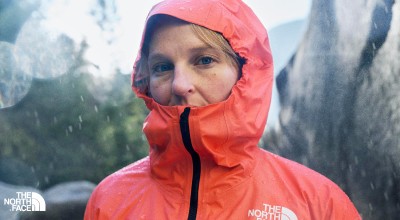What is Waterproof/Breathable?

This article is part of the Rain Gear 101 series.
You see the description waterproof and breathable on rain jackets, but what exactly is waterproof/breathable, and how does it work? Our Outerwear Experts share everything you need to know about waterproofing so you can find the right level to stay dry in any condition that comes your way!
What Does Waterproof/Breathable Mean?
When a rain jacket is described as waterproof/breathable, it means that you’ll stay dry on the interior (waterproof) while still allowing sweat to escape (breathable). This is incredibly important so that you don’t feel cold and clammy.
Wondering the difference between waterproof, water-resistant, and water-repellent? Check out our Expert guide that breaks down the differences between each technology.
How Does Waterproof Technology Work?

There are two ways that a rain jacket offers waterproof and breathable protection—using a laminate or coating.
- nike lebron 9 gs grey volt purple available
- Nike Pro-Logo auf der Brust
- Laminate: A membrane is laminated (adhered) to the inside of the fabric. This waterproof/breathable construction is durable and well-suited for harsh conditions. Typically, this provides windproof protection too.
- Coating: A film (coating) is applied to the inside of the fabric. This waterproof/breathable construction is lightweight and more affordable compared to laminates.
What is GORE-TEX?
When looking at waterproof products, whether it’s rain jackets, hiking boots, gloves, or running shoes, you’ll often see GORE-TEX associated with waterproofing. GORE-TEX is a high-quality waterproof/breathable membrane that also provides windproof protection. Brands like Brooks, Gordini, SITKA, Danner, Simms, and more use a GORE-TEX membrane within their products to ensure reliable waterproofing.
What Does 2, 2.5, & 3-Layer Mean?
When choosing a rain jacket, you’ll notice 2-layer, 2.5-layer, and 3-layer called out. Since laminates and coatings are thin, they are protected between layers. The outer layer protects from debris and adhesions, while the inner layer protects from oils.
How the layers are constructed influences the jacket’s weight, durability, breathability, and more.
- 2-Layer (outer shell fabric + membrane): The membrane is adhered to the outer shell fabric, creating two layers. There is usually a hanging liner on the interior to help protect the membrane. These types of jackets are good for casual hiking and traveling.
- 3-Layer (outer shell fabric + membrane + interior fabric): The membrane is adhered to the outer shell fabric and an interior fabric layer, creating three layers. These are lightweight, very durable, and provide the best protection—they are also the most expensive. A 3-layer rain jacket is good for technical hikes.
- 2.5-Layer (outer shell fabric + coating + protective film): This jacket uses a waterproof coating applied to the inside of the outer shell, creating two layers. The “half layer” is the protective film that’s applied to the interior of the jacket for added protection. These jackets are best for casual wear because they aren’t as durable.
Understanding Waterproof/Breathable Ratings

You may see waterproof/breathable ratings to describe how effective the material is at keeping you and your gear protected from the rain or snow while still allowing vapor to escape. This testing is done in the manufacturer’s lab and translated into numbers like 10k/5k, where the first number measures waterproof effectiveness and the second number measures breathability.
- The higher the first number the greater the level of protection.
- The higher the second number the more breathable.
For example, a snowboarding jacket may have a waterproof/breathable rating of 10k/15k, which is perfect because this offers protection in average snow and moderate breathability. On the other hand, a rain jacket for hiking may have a waterproof/breathable rating of 15k/20k, which is necessary because it will keep you dry in moderate rain and provide plenty of breathability when you are active.
Please Note: Most of the testing has been standardized between brands but there might be some discrepancies.
Waterproof Rating Chart
The chart below gives you a general idea of the level of protection and weather conditions you can expect your jacket to hold up against.
| Waterproof Rating (mm) | Weather Conditions |
|---|---|
| 0 - 5,000 mm | Light rain, dry snow |
| 6,000 - 10,000 mm | Light rain, average snow |
| 11,0000 - 15,000 mm | Moderate rain, average snow |
| 16,000 - 20,000 mm | Heavy rain, wet snow |
| 20,000+ mm | Heavy rain, wet snow |
Breathable Ratings Chart
The chart below gives you a general idea of the breathability your rain jacket will offer.
| Rating (g) | Breathability Level | Activity Level |
|---|---|---|
| Under 5,000 g | Low | Light intensity (walking) |
| 5,000 - 15,000 g | Moderate | Moderate intensity (hiking) |
| 15,000+ g | High | High intensity (biking) |
Whether you're braving the elements on a rugged hike, exploring the city streets during a downpour, or commuting during unpredictable weather, understanding the ins and outs of waterproof/breathable technology helps you find the right level of protection you need to stay both dry and comfortable. If you have additional questions about choosing rain gear, stop into your local WITZENBERG to speak with an Outerwear Expert.


